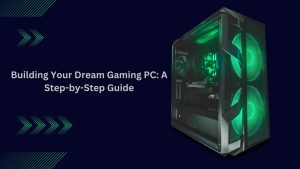What is Human Resources Software?
The term “HR management system” refers to a comprehensive software application or platform that enables HR professionals to efficiently manage employee information, automate administrative processes, and enhance overall HR operations.
Importance of HR Software in Modern HR Management
The changing work landscape, marked by rapid technological advancements, has made Human Resources (HR) adopt new roles that align with work’s digitalized and fast-paced nature.
HR professionals are not only responsible for administrative tasks but also play a strategic role in managing and developing a company’s workforce. To effectively fulfill their responsibilities, HR departments turn to HR software as a crucial tool in modern HR management.
HR software offers many benefits and features that streamline HR processes, enhance efficiency, and improve employee experience. Let’s explore the importance of HR software and the various benefits it brings to the table.
Streamlining HR Processes
HR software serves as a centralized platform for managing all HR-related activities. It eliminates manual paperwork and allows HR professionals to automate routine tasks, saving time and reducing human error.
By streamlining processes, HR software empowers HR teams to focus on more strategic initiatives, such as talent acquisition, employee development, and employee engagement.
Recruitment and Tracking Applicants
One of the most critical functions of HR software that offer tremendous help to Human Resources is its ability to simplify and streamline the recruitment process.
It provides features like applicant tracking, resume parsing, and job posting across multiple platforms.
HR professionals can easily manage job openings, screen applicants, and track candidates’ progress throughout the hiring process. Hence, the result is a more efficient selection process that ensures the best-suited candidates are chosen for the job.

Employee Data Management
HR software provides a secure and organized way to manage employee data. HR professionals can store, update, and access employee information such as personal details, employment history, performance records, and training certifications. With accurate and up-to-date information, HR teams can effectively make better plans and strategies to address employee needs.
Time and Attendance Tracking
Tracking employee attendance and managing leave requests can be time-consuming for HR departments. HR software simplifies this process by automating time and attendance tracking.
Employees can clock in and out using the software, and it can also handle leave requests and approvals. The system ensures accurate attendance records, reduces administrative burdens, and facilitates payroll processing.
Performance Management and Appraisal
HR software plays a crucial role in managing employee performance and conducting performance appraisals. It allows HR professionals to set performance goals, track progress, and provide continuous feedback to employees.
The software can automate appraisal processes, including self-assessment, manager reviews, and goal setting. It promotes transparency, enhances performance management, and facilitates employee development.
Training and Development Management
Investing in staff training and development is needed for businesses to maintain a competitive edge. HR software enables teams to effectively plan, deliver, and track training programs.
It assists in identifying skill gaps, creating training modules, scheduling sessions, and tracking employee progress. With HR software, organizations can develop a skilled workforce and foster a culture of continuous learning.

Payroll and Compensation Administration
HR software simplifies payroll and compensation administration by automating calculations, tax deductions, and generating payslips. It ensures accuracy in salary calculations and compliance with labor laws.
Additionally, the software can handle various compensation components, such as bonuses, incentives, and benefits, providing a comprehensive view of employee compensation.
Employee Self-Service Portals
HR software often includes employee self-service portals, allowing employees to access and update their information, submit leave requests, view pay stubs, and access company policies.
Self-service portals empower employees by giving them autonomy over their HR-related tasks and reducing the dependency on HR personnel for routine inquiries and administrative tasks.
Reporting and Analytics
HR software offers robust reporting and analytics capabilities, enabling HR professionals to generate insightful reports and gain valuable workforce insights. These reports can include data on employee demographics, turnover rates, training effectiveness, and performance metrics.
By analyzing this data, HR teams can make data-driven decisions, identify trends, and implement strategies to improve overall HR management.
Guide to Different Types of Human Resources Management Systems
Various HR software is available, and knowing your best alternatives and how to evaluate them is essential. This guide will provide insights into different HR software categories and their key features.
Types of HR Software
Explore the different types of HR software, highlighting their key features and benefits.
HR Management Systems (HRMS)
HRMS is a comprehensive solution for managing various HR tasks, including employee information, attendance tracking, benefits administration, and time off management. It provides a centralized database to store employee data and automates essential HR processes.
Applicant Tracking Systems (ATS)
ATS simplifies and enhances recruitment by automating job posting, resume screening, interview scheduling, and candidate management. It enables HR professionals to efficiently manage applicant data, track progress, and collaborate with hiring teams.

Talent Management Systems (TMS)
TMS helps organizations manage their talent lifecycle effectively, from recruitment to performance management and career development. It includes performance appraisal, goal setting, succession planning, and learning and development opportunities.
Learning Management Systems (LMS)
LMS facilitates training and development initiatives by providing a platform to create, deliver, and track employee learning programs. It enables organizations to offer online courses, track progress, and assess learning outcomes.
Payroll Software
Payroll software is part of the Compensation Management System that simplifies payroll management processes, such as calculating salaries, taxes, deductions, and generating pay stubs. Aside from ensuring accuracy, compliance, and timely employee payment with zero errors, they provide tools for planning, allocating, and distributing employee compensation.
Performance Management Software
Performance management software enables organizations to set goals, track employee progress, conduct performance reviews, and provide feedback. It promotes a fair and transparent performance evaluation process and helps identify improvement areas.
Employee Engagement Software
Employee engagement software fosters a positive work environment and enhances employee satisfaction. It includes features like employee surveys, recognition programs, communication tools, and social collaboration platforms.
Factors to Consider When Choosing HR Software
Scalability and Customization
Consider the scalability of the software to accommodate your organization’s growth. It should be customizable to align with your specific HR processes and adapt to future needs.
Integration with Existing Systems
Assess the compatibility of the HR software with your existing systems, such as payroll or accounting software, to ensure seamless data flow and eliminate duplicate data entry.
User-Friendliness and Interface Design
The software should have an intuitive interface and be easy for HR professionals and employees to navigate. User-friendly software reduces training time and enhances user adoption.
Data Security and Compliance
HR software deals with sensitive employee information, so ensuring the software has robust security measures to protect data privacy and comply with relevant regulations is crucial.
Vendor Support and Training
Evaluate the software vendor’s level of support and training. Reliable customer support and comprehensive training resources can help you maximize the benefits of the software.
Cost and Return on Investment (ROI)
Consider the upfront and ongoing costs of the HR software. Evaluate the potential return on investment by assessing the time and cost savings, increased productivity, and improved HR processes.
The bottom line is when choosing HR software, remember to align your selection with your specific needs and long-term HR goals to maximize the software’s benefits and drive organizational success.

Implementing HR Software in Organizations
Needs Assessment and Requirements Gathering
The first step in implementing HR software is to conduct a thorough needs assessment and requirements gathering process. The process involves:
- Evaluating existing HR processes.
- Identifying pain points.
- Determining the specific functionalities and features required from the software.
Engaging stakeholders, such as HR professionals, managers, and IT personnel, is crucial to gather diverse perspectives and ensure comprehensive requirements gathering.
Vendor Evaluation and Selection
Once the requirements are defined, organizations can start evaluating different HR software vendors. It involves researching options, reviewing vendor credentials and reputation, and comparing features, pricing, and customer reviews.
It is advisable to involve key stakeholders in the evaluation process and consider software scalability, customization options, data security measures, and vendor support.
Data Migration and System Configuration
After selecting a vendor, the next step is to migrate existing HR data to the new system. This requires careful planning to ensure data integrity and accuracy during the transition.
The HR team should collaborate with the software vendor to develop a data migration strategy and define the necessary data fields, formats, and structures. System configuration entails customizing the software to align with the organization’s HR processes and requirements.
Employee Training and Change Management
Employee training is crucial to successfully adopting the new HR software. The HR team should design and deliver comprehensive training programs for HR professionals and end-users. Training sessions can be conducted through workshops, online tutorials, and user manuals.
Additionally, change management strategies should be implemented to address any resistance or concerns from employees. Clear communication, stakeholder involvement, and addressing potential challenges will help facilitate a smooth transition.
Testing and Deployment
Before deploying the HR software organization-wide, thorough testing is essential to identify and resolve bugs or issues. The HR team should extensively test all system functionalities, data accuracy, and integration with other systems.
User acceptance testing should involve a representative end-user group to ensure the software meets their needs and expectations. Once testing is completed, the software can be deployed to all users.
Ongoing System Maintenance and Updates
After the initial implementation, ongoing system maintenance and updates are necessary to ensure the software’s optimal performance. Regular maintenance tasks include monitoring system performance, addressing user feedback, troubleshooting issues, and applying necessary software updates and patches.
The HR team should establish a maintenance schedule and collaborate with the software vendor to ensure continued support and access to new features and enhancements.
Challenges and Considerations in HR Software Implementation

Resistance to Change and Employee Adoption
One of the primary challenges in HR software implementation is resistance to change from employees. Transitioning to a new system may disrupt established routines and processes, leading to initial reluctance and skepticism.
To address this challenge, organizations should emphasize the benefits of the latest software, provide clear communication about the implementation process, and involve employees in the decision-making and training phases. Encouraging user feedback and addressing concerns can help promote employee adoption and mitigate resistance.
Data Accuracy and System Integration
Maintaining data accuracy during the implementation process is crucial. Migrating existing HR data to the new system requires careful planning and validation to ensure data integrity. Additionally, integrating HR software with other operating systems, such as payroll or accounting, can present challenges.
Organizations should thoroughly test data migration processes, establish data validation protocols, and collaborate closely with the software vendor to ensure smooth integration with existing systems.
Security and Privacy Concerns
HR software implementation requires careful consideration of security and privacy concerns. HR systems contain sensitive employee information, and ensuring data security is paramount.
Organizations should assess the software vendor’s security measures, such as encryption, access controls, and data backup protocols. And ensure that any software complies with data security laws like GDPR or CCPA.
Training and Technical Support
Adequate training and technical support are crucial for successful HR software implementation. Giving HR experts and end users thorough training programs ensures the change goes smoothly.
The software vendor should offer user-friendly training resources, including workshops, documentation, and online tutorials. Ongoing technical support, including a dedicated helpdesk or support team, addresses user inquiries, troubleshoots issues, and ensures a positive user experience.
Customization and Scalability
Organizations have unique HR processes and requirements, so the ability to customize the software is important. HR software should provide flexibility in adapting to specific needs and workflows.
It should allow organizations to configure settings, create custom fields, and personalize user interfaces. Scalability is another consideration, as the software should be able to accommodate organizational growth and changing requirements over time.
The Future of HR Software
Artificial Intelligence and Machine Learning
In the future, HR software will heavily employ technologies such as artificial intelligence (AI) and machine learning (ML) to automate and streamline various HR-related procedures.
AI algorithms will assist in resume screening, candidate sourcing, and initial screening interviews. Machine learning models will continuously improve and adapt based on historical data, allowing for more accurate predictions and recommendations.
Predictive Analytics and Data-Driven Insights
The future of human resource management software will boost decision-making by utilizing the power of predictive analytics and data-driven insights.
Software systems can identify patterns and trends by analyzing vast amounts of HR data, enabling organizations to predict potential talent gaps, attrition rates, and training needs. These insights will help HR professionals make informed strategic decisions and proactively address issues before they arise.
Cloud-Based HR Solutions
Cloud-based HR solutions will dominate the future of HR software. Organizations will rely on scalable and flexible cloud platforms to store, manage, and access HR data securely from anywhere.
Cloud-based HR software will facilitate seamless collaboration among HR teams, streamline workflows, and ensure data integrity and privacy. Additionally, cloud solutions will offer regular updates and improvements, eliminating the need for manual software updates.

Mobile and Remote Access
With the rise of remote work and the increasing reliance on mobile devices, HR software will prioritize mobile and remote access. Employees can access HR functionalities such as submitting leave requests, accessing payslips, and updating personal information through mobile apps.
Remote access will empower employees to manage their HR-related tasks efficiently, irrespective of their physical location, promoting a more flexible and agile work environment.
Enhanced Employee Experience and Engagement
In the future, HR software will focus on enhancing the employee experience and promoting higher levels of engagement. Personalization will play a crucial role, with HR software tailoring content and recommendations based on individual preferences and needs.
Features such as self-service portals, real-time feedback mechanisms, and learning and development platforms will empower employees, fostering a sense of ownership and continuous growth. HR software will also facilitate seamless communication between employees and HR teams, promoting transparency and trust.
FAQs
What is HR software?
HR software refers to digital technologies designed to streamline and automate HR activities within a company. Other terms used to mean HR software include HRIS or Human Resources Information Systems and HRMS or Human Resources Management Systems.
Its centralized platform facilitates employee data management, recruitment, onboarding, performance management, benefits administration, time and attendance tracking, and other HR functions.
How does HR software streamline HR processes?
HR software streamlines HR processes by automating manual tasks, reducing paperwork, and improving data accuracy. Key ways in which it accomplishes this include:
a) Centralized employee database: HR software provides a single, secure repository for storing employee information, such as personal details, employment history, performance records, and training records. This eliminates the need for paper-based records and enables easy access and updates.
b) Employee self-service: HR software typically includes self-service portals that empower employees to access and update their personal information, submit time-off requests, view pay stubs, and participate in performance reviews. This reduces administrative burden and fosters employee engagement.
c) Recruitment and applicant tracking: HR software streamlines the recruitment process by automating job posting, applicant tracking, resume screening, interview scheduling, and candidate communication. This accelerates the hiring process and ensures a smooth candidate experience.
d) Performance management: HR software enables organizations to establish performance goals, track progress, conduct performance reviews, and provide employee feedback. This promotes transparency, aligns individual and organizational objectives, and enhances performance.
e) Payroll and benefits administration: HR software automates payroll calculations, tax deductions, and benefits administration. It ensures accurate and timely processing of employee payments, tax filings, and benefits enrollment, reducing errors and ensuring compliance with legal requirements.
What are the essential characteristics of HR software?
Consider the following characteristics when comparing HR software options:
a) Employee database administration: Look for comprehensive features that simplify data storage, retrieval, and management.
b) Recruitment and applicant tracking: Ensure the software provides features for creating job postings, managing applications, conducting interviews, and tracking candidate progress.
c) Performance management: Look for tools to set goals, conduct performance reviews, and track individual and team performance.
d) Time and attendance tracking: Choose software that offers features to record employee work hours, manage time-off requests, and generate attendance reports.
e) Payroll and benefits administration: Ensure the software integrates with payroll systems and automates payroll calculations, tax deductions, and benefits administration.
f) Employee self-service: Look for self-service portals that allow employees to update their personal information, view pay stubs, request time off, and access relevant HR policies.
g) Reporting and analytics: The software should provide robust reporting capabilities, enabling HR professionals to generate customized reports and gain insights into HR metrics and trends.
How does HR software benefit recruitment and applicant tracking?
HR software significantly improves recruitment and applicant tracking processes in several ways:
a) Streamlined job posting: HR software simplifies creating and distributing job postings across various platforms, including company websites and job boards.
b) Automated applicant tracking: Automates the collection, storage, and organization of applicant data, including resumes, cover letters, and interview feedback. This makes it easier for HR professionals to track the progress of each candidate throughout the recruitment process.
c) Enhanced candidate experience: HR software often includes features such as automated email notifications and interview self-scheduling options, which improve communication and provide a positive experience for applicants.
d) Efficient resume screening: The software can utilize keyword-based searching and filtering techniques to help HR professionals quickly identify qualified candidates from a large pool of applicants, saving time and effort.
e) Simplified interview scheduling: HR software often integrates with calendar systems, allowing seamless scheduling of interviews and reducing the likelihood of scheduling conflicts.
f) Collaborative hiring process: HR software facilitates collaboration among hiring managers and team members by providing a centralized platform to share candidate profiles, interview feedback, and evaluations.
g) Data-driven decision-making: With HR software, recruiters and hiring managers can access real-time analytics and reports on recruitment metrics, such as time-to-fill, source of hires, and candidate quality. This enables data-driven decision-making and continuous improvement in the recruitment process.
Conclusion:
HR software has become an indispensable tool for modern organizations, streamlining HR processes, improving efficiency, and enhancing decision-making. Organizations can achieve significant benefits by leveraging its key features, such as centralized employee databases, recruitment and applicant tracking, performance management, and payroll administration. While implementing HR software may present challenges, proactive planning, effective change management, and ongoing support can help organizations overcome these hurdles and harness the full potential of HR software to drive organizational success.




